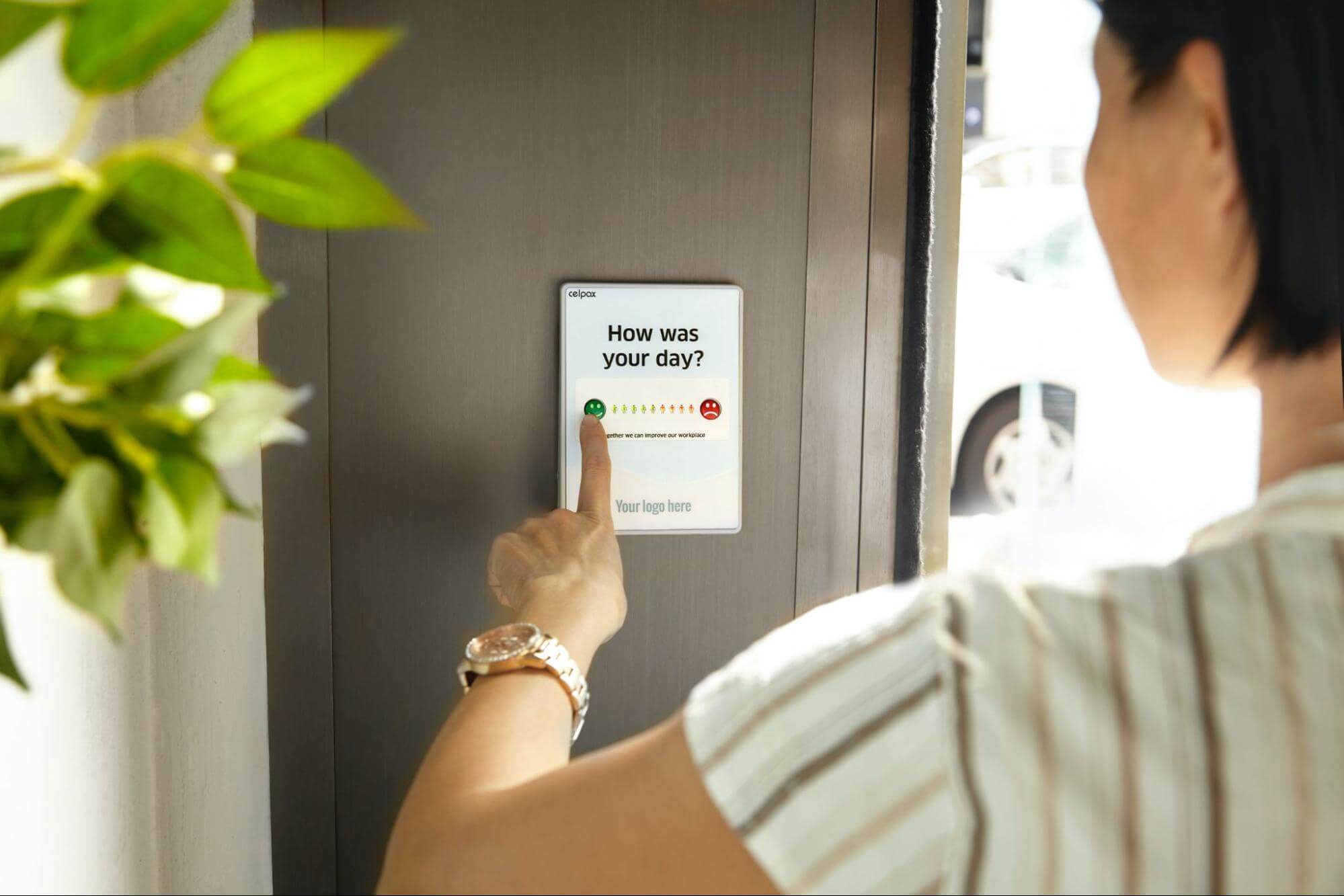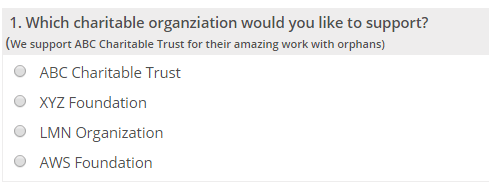Marketing is all about identifying, predicting, and meeting customer needs. When it comes to keeping your customers happy, one of the key things your brand needs to do is to give them a voice. And the channels you give them to speak up and share their ideas with you matter more than you may think.
When it comes to reaching your customers and asking for feedback, there are a plethora of tools that you can use. Online surveys are one of the most effective ones. They give you direct contact with your audience and help you easily shed light on the areas of the customer experience you are most interested in.
However, for your surveys to be efficient, you need to understand how to craft an engaging, visually pleasing survey that also addresses the points you need. Now, this may not be as easy as it may seem: surveys require a lot of careful planning and ideation to be effective. To help you achieve this, we are taking a look at what an online survey is, as well as 10 tips to help you create better surveys.
What is an online survey?
In the most simple form, an online survey is a series of questions that customers or prospects fill online. Depending on the needs of your brand, the surveys can be of different formats and lengths, ranging from multiple-choice questions to short answers.
In the marketing context, online surveys are tools that have some business goals in mind. You can go with a market research survey to better understand market needs and competition, or you can use them to collect additional customer data or feedback on a specific product, service, or experience.
Image source: https://unsplash.com/photos/1Lf5Adh9SCg
More often than not, online surveys are conducted through special survey tools: digital software that allows you to create, manage, and analyze surveys. These tools are cost-effective, customizable, provide accurate data, and are overall easy to use.
Employing advanced survey tools amplifies the efficiency and precision of online surveys, transforming the data collection and analysis landscape. These digital solutions, specifically designed for creating, managing, and analyzing surveys, contribute to a seamless and user-friendly experience.
Their cost-effectiveness ensures a practical approach to gathering insights, while the customization options cater to the unique needs of each survey. The accuracy embedded in these tools goes beyond mere data collection; it serves as a foundation for informed decision-making.
The overall ease of use makes them accessible to a diverse range of users, promoting widespread utilization and maximizing the potential impact of online surveys across various domains.
10 Tips For Creating Better Surveys
-
Define the goal of your survey from the start
First things first, you need to have a clear and achievable goal for your survey. Otherwise, you risk wasting time and resources without getting much benefit for your business in return.
Ask why you have decided to create the survey and what do you want to achieve with it? Find specific and clear answers to these questions. For example, if you sell things online and want to boost the performance of your online store, instead of “I want to understand customer satisfaction level,” you could ask, “I want to know the weak spots of my business which would help me provide better services.”
The goal you set for your survey will then help you determine the type of survey you need to go with and what questions to include.
2. Keep it as short as possible
It’s important to remember that your respondents are doing you a favor when they choose to dedicate time and fill it out. Show them that you respect their time by carefully considering your questions, both the quality and wording. Don’t go with 15 questions when 12 will suffice.
Determining an ideal length of a survey is not easy, as it will depend on the industry, the motivation of the respondents, and how invested they are in the results. However, it’s a good rule of thumb to keep your survey under 15-20 minutes even for in-depth research because the quality of responses starts to decline after that, as people start rushing through the questions.
3. Leave the sensitive questions to the end
You can treat the survey as a conversation between your brand and the customer. Because you are meeting them for the first time, asking sensitive questions right away may scare them and result in a lower response rate. Instead, start with “softer” questions first and use them to break the ice
One of the most useful of all the useful lifehacks is to do mobile surveys. Since more than 90% of users use mobile apps. Such surveys in real-time will help you to get a response from your users while spending a minimal amount of time.
Leave the potentially sensitive, more challenging questions until the end. The respondent is more comfortable and invested in the survey. Having dedicated time to fill the questionnaire out, they are less likely to leave in this case.
Image source: https://unsplash.com/photos/Uduc5hJX2Ew
4. Try to stick with close-ended questions
Close-ended questions or multiple-choice questions are one of the most popular options for surveys, exams, etc. They are simple, intuitive, and easy to grasp. They also keep the attention of the users on a set of options that you define and help you get a clear idea of the situation when analyzing the answers.
When respondents answer close-ended questions, you get the results directly. Especially when it comes to B2B companies, surveys with close-ended questions help collect data that will later be used for B2B lead generation and customer retention purposes. This is because these types of questions have a clear objective, so the information gathered is also precise.
5. Group questions
If your survey consists of several types of questions or covers different topics, it’s a good strategy to group the questions together. For example, you can assemble the rating scale questions in one group and open-ended questions in another. Or you can start with the introductory and contact information in one section and then assemble the questions about their experience with your brand in another. This will help respondents understand the logic behind the questions better.
6. Avoid leading and double-barrelled questions
One of the critical mistakes people and brands often make is not asking specific enough questions. When you are writing down the questions of your survey, be very clear about what you mean. Avoid writing leading questions that will prompt the respondents to choose the desired answer because this will leave you with inaccurate data.
Try also to avoid double-barrelled questions. “On a 1-10 scale, how much you like our product and customer service?” is an excellent example of this. Your customers may be happy with the product, but not so with the support, or vice versa, but this question won’t allow them to share this with you. Don’t try to save space or reduce the number of questions by cramming them into one.
Source: SoGoSurvey
7. Have the “Other” option
When using multiple-choice close or close-ended questions for your survey, make sure also to include the “Other” option. The options you give may not always be sufficient. Some answers you’ll get may offer valuable insights and ideas you haven’t considered when you start analyzing your survey. Additionally, you’ll also show the surveyors that you value their opinion and want to hear more from them instead of only concentrating on your opinion and ideas.
8. Add a survey progress bar
This may come as a surprise, and in fact, many brands and individuals miss this step when creating a survey. However, having a progress bar is a very helpful tool: it can assist the respondents during the survey by showing them how much or little they still have. This can assist in the data collection process; as once aware of how far they’ve come with the survey, respondents tend to stick around and finish the survey instead of leaving it.

Source: QuestionPro
9. Offer incentives
Nobody likes to work for free. Now, you may not think of filling a survey as work, but it is. It requires time and effort on the side of your audience. Therefore, consider including a little incentive into your survey to motivate people to fill it and improve the response rate. The incentive can vary from a gift card or a discount to an industry research e-book you’ve recently made. The best incentives are related to your company in some way. People love to win “free things,” and it also helps to build an online community in a short period.
10. Preview and test your survey
As the final step of creating your survey, you need to test and review your survey to avoid any issues. Start with sharing the survey with some of your colleagues or friends. Ask them to fill in the survey and share any questions they may have, or tell if there is something they find unclear or too sensitive.
Apart from this, make sure to double-check the survey’s structure, the question order, and the formatting. This will save you from sending out a survey with a missing question or a spelling mistake. Use your friends who test the survey as a “third eye” so they can catch errors. You can also use online grammar checking tools to make sure there are no mistakes you’ve missed.
How To Increase Your Survey Response Rate?
Creating your survey is important, but it’s just the start. The hardest part then will be reaching your desired audience and incentivizing them to fill it. Here are a few tips on how you can achieve this.
- Add a Good Description
If you’re going to just “throw” the link into your group or page, few will give attention to it. That’s not just for surveys only come to surveys. Captivating captions are one of the cornerstones of effective social media management. But if you make people feel special and choose the right words, that can change everything. Mention how much time it will take and how much their opinion matters to you.
- Use Your Channels
If you have their emails, send a message and ask them to take the survey. Post on your socials, ask for sharing. If you have a web page, you can take them to your survey with a pop-up. If you have their numbers, SMS marketing is also a great way to send them your survey link and ask them to take it. Take your time to learn how you can promote your surveys in Facebook groups or other marketing channels for the best result.
- Sharing Is Caring
Share and ask others to share as well. This is the way that your survey can get viral and arrive at a different audience. Online communities are a great place where many people gather together, share there if you have one, and if not build one, because it can be helpful in many ways.
Conclusion
Surveys can help you better understand your customers and build your business. Creating online surveys is an excellent method for interacting with your customer base and can help you gather the information you need to improve the user experience on your website.
While creating a survey, remember to put together the same questions(rating, checkboxes, yes/no, scale, etc.). Avoid asking unnecessary questions in your survey, but at the same time, ask essential questions in a few ways. Then, there is a chance that people will answer differently.



